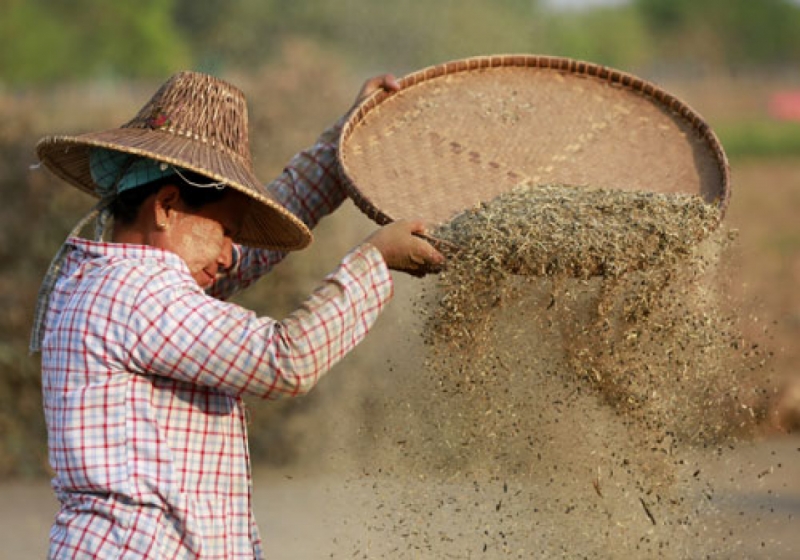



From Myanmar Times

Agriculture forms the backbone of the economy in Myanmar and women the backbone of the agriculture. The sector provides employment for two-thirds of the population and accounts for more than one-third of Myanmar’s GDP. Rural women in Myanmar work in all sectors of agriculture, cultivating crops, often alongside their husbands, rearing animals for food or trade and working in forestry and fisheries.
Yet the crucial contribution of women in agriculture is largely overlooked. On average, women receive less pay in agricultural work than men, sometimes substantially less. Unlike senior levels within the Department of Agriculture where women are well represented, women’s participation in local decision making is minimal. A 2015 study by the Food and Agricultural Organization of the UN (FAO) found that at local government level, there are few female administrators across the country’s 330 townships and only 0.001 percent of village tract administrators are women. How then can women’s voices be heard and their needs be understood and addressed?
One consequence of the poor visibility of women’s contribution to agriculture is that they have less access to important training opportunities. Women’s participation in agriculture and animal husbandry training, particularly those who are heads of households, could be improved by giving consideration to the design, location and timing of trainings. For example, holding training sessions or meetings after the market closes down or providing support for childcare during the training would make it possible for more women to attend.
Accessing credit and holding assets can also hinder women’s contributions in agriculture. Some sources of formal lending tend to prefer making loans available to the head of household, which in Myanmar are mostly men. It is also encouraging to note that considerable success in increasing women’s access to affordable credit has been achieved through microfinance schemes targeted at women. These are tocrucial for supporting women to achieve household food security but we must also work towards removing barriers to women’s access to formal credit.
Not just in Myanmar, but globally, gender equality is essential to achieving food security for all. A landmark study by FAO demonstrated that closing the gender gap in agriculture would result in 20-30 percent increases to farm yields and could raise total agricultural output by up to 4 percent. Such estimates should not be ignored.
At the national level, the government’s interim National Action Plan for Agriculture, proposed by FAO last year, highlights several initiatives that could serve to improve women’s economic empowerment. The fact that poverty alleviation is now at the heart of policy goals – including through the broader National Strategy for Poverty Alleviation and Rural Development – and there is a new decentralised approach to rural development presents major opportunities. Under the umbrella of NAPA, FAO’s Gender and Social Inclusion study carried out in 2015 recommends investment in the development of a comprehensive strategy for rural women’s economic empowerment as a priority.
In a country that is considered one of the "most at risk" in the region for natural disasters, building resilience to livelihoods in order that they can withstand such threats is paramount. Here too, the role of women cannot be overlooked. Women are often more vulnerable to natural disasters than men, particularly if they have less access to productive agriculture assets or knowledge of emergency planning and evacuation.
Yet in our efforts to build resilience of livelihoods, we should not only be aware of these vulnerabilities, but also embrace the specific skills and capacities of women which could make them key players in disaster risk reduction. Women’s knowledge of their own communities, their ability to communicate and network, their experience and responsibilities in caring for family members, their high level of risk awareness and their management of environmental resources, are all factors that could make a significant contribution to such policies.
On International Women’s Day, let us celebrate the enormous contribution that women make to agriculture and the overall economy of Myanmar. At the same time, let us commit to supporting and strengthening this contribution through all our development and humanitarian work.